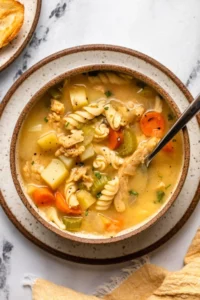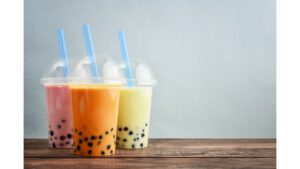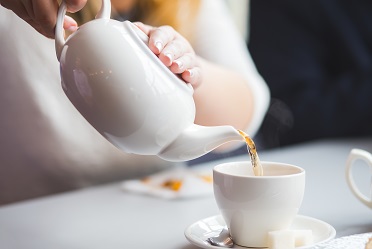In previous blogs in this series, we have taken a look at the CQC fundamental standards, which are the standards below which your care must never fall, https://www.cqc.org.uk/about-us/fundamental-standards. To date we have covered the CQC fundamental standards covering:
- Person-Centred Care
- Dignity and Respect
- Consent
- Safety
and most recently, Safeguarding from Abuse, https://www.careis.net/cqc-fundamental-standards-safeguarding-from-abuse/.
 We have seen that CQC fundamental standards are in reality the bottom line below which the quality of health and social care should not fall regardless of what else is happening. They form the safety net for care, but as most people would expect, and all care providers should aspire to, care providers should be aiming to provide care which far exceeds the QC fundamental standards.
We have seen that CQC fundamental standards are in reality the bottom line below which the quality of health and social care should not fall regardless of what else is happening. They form the safety net for care, but as most people would expect, and all care providers should aspire to, care providers should be aiming to provide care which far exceeds the QC fundamental standards.
Inn this blog we will look at what they might mean mean by the CQC fundamental standards relating to “Food and drink”. On their webpage covering the CQC fundamental standards, they state that the fundamental standard of food and drink requires that:
You must have enough to eat and drink to keep you in good health while you receive care and treatment.
There are four important things that care providers need to note about this statement, and which the CQC will look for and consider on inspection of a service. If we break the statement down into its component parts, these are:
- People must get enough to eat.
- People must get enough to drink.
- What people get to eat must keep them in good health.
- What people get to drink must keep them in good health.

Once looked at like this, the CQC fundamental standard of food drink starts to make some measurable sense.
First providers must ensure people get enough to eat. This means ensuring that there is enough food to feed everyone in their care so that they are not left hungry. This also means a variety of food so that individuals have enough to choose from to keep them sated. For most residential care providers this means three meals a day plus snacks with mid morning, mid afternoon and evening drinks – in much the same way that people behave in their own homes. In many care settings, there are snacks available from a snack bar which enables people to take control of their own eating.
People must also get enough to drink. This means the provider needs to ensure not only that the quantity of drinks is available, but that there is enough variety for people to choose from. Again this means drinks with meals and between meals and availability at all other times. One strategy to support this is a hydration station in the care setting. Having somewhere people can go to get their own drinks, or ask staff to get drinks for them, is potentially enabling and demonstrates that people can get enough to drink.
 Ensuring what people get to eat keeps them in good health points to two things, the actual food (the diet) and the ability of people to eat. With the food being supplied needing to “keep you in good health while you receive care and treatment”, providers need to be able to provide for a variety of dietary requirements, such as diabetes or coeliac disease, as well as for personal preferences such as vegetarianism or veganism. This means providers, catering and care staff need to understand about a variety of diets.
Ensuring what people get to eat keeps them in good health points to two things, the actual food (the diet) and the ability of people to eat. With the food being supplied needing to “keep you in good health while you receive care and treatment”, providers need to be able to provide for a variety of dietary requirements, such as diabetes or coeliac disease, as well as for personal preferences such as vegetarianism or veganism. This means providers, catering and care staff need to understand about a variety of diets.
As well as the content of the diet and the need for sufficient food being supplied, some people in care will need help with their eating. This may be because they have forgotten how to eat, they have problems swallowing and need a soft diet, see https://iddsi.org/, or they need feed provided via a tube. In whatever case, it is the role of the provider, in ensuring they meet the CQC fundamental standards, to make sure that people have access to the right food for their needs and preferences and that they can eat it, be helped eating it or have it provided in another way.
Similarly with drink to keep people in good health, there is an onus on the provider to consider what this means for the people in their care. For example, sugary drinks are not good for people affected by diabetes nor those on weight loss diets, while some people may need their fluid intake moderating for medical reasons, such as being on dialysis or having heart failure.
provider to consider what this means for the people in their care. For example, sugary drinks are not good for people affected by diabetes nor those on weight loss diets, while some people may need their fluid intake moderating for medical reasons, such as being on dialysis or having heart failure.
We hope this blog has helped strip back some of the meaning behind the CQC fundamental standards, especially “Food and Drink”. It is also hoped that this blog has made it possible for providers to understand what is required of them and why the CQC fundamental standards are in fact so important. Some providers may find it useful to share this learning with their catering and care staff so that they too can better understand what is required of them.
With CAREis care and support, care staff can not only use the care and support plans to identify how and what they will provide for service users in the way of food and drink, they can also record intake on the dedicated food and drink charts.
Careis policies and procedures identify no less than eight policies relating to eating and drinking, including Food and Fluid Chart Use and Hydration and Nutrition Management.
Drop us a message and see how we can help with your CQC fundamental standards using our digital care management software, https://www.careis.net/book-a-remote-demo/.
